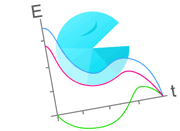But this is an average effect. Suppose that you find that out of each class of 30 following both SMC and GET, 12 will improve (if at all) by less than 6 marks and still fail. Of the remaining 18, only 7 will actually improve enough to reach a grade C, and the remaining 13 will possibly scrape a borderline pass. Despite having extensive information for hundreds of previous students over many years, the school does not offer any analysis of how to recognise whether you could benefit from these courses, but instead simply recommends that you follow the retake schedule for a year, taking both SMC and GET.
What would your reaction be?
Would it change if you then found that in your area, there was no realistic prospect of proper SMC, and only of a more limited form of GET? (and of course, you need to remember that a grade A is equivalent to a return to full health - this still isn't an option for anybody).
It is a matter of priority that we find the factors that determine if GET and CBT are appropriate and effective for particular patients, and the valuable database provided by the PACE trial should enable us to do that. It is inexcusable to have all this information, but continue to suggest that most patients could benefit from the therapies. That is not true.
Much has also been made of the fact that few of the patients' scores showed any real deterioration on these therapies. Would it affect your judgement if you discovered that both the structure of the study and of the scale itself may have prevented some patients from registering deterioration, even if their scores were not anywhere near the maximum fatigue score of 33? There is a much more thorough study of the measurement (or not) of harm in this and other studies by Tom Kindlon.
|



